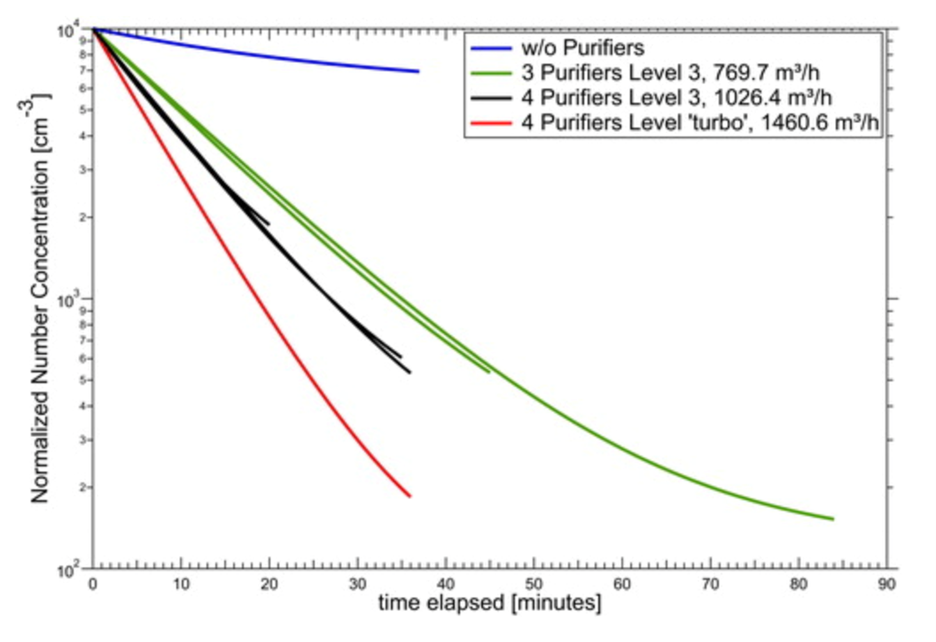“Testing mobile air purifiers in a school classroom: Reducing the airborne transmission for SARS-CoV-2”
J. Curtius, M. Granzin & J. Schrod
Read the full article: Aerosol Science and Technology, 55:5, 586-599, DOI: 10.1080/02786826.2021.1877257
Transmission of SARS-CoV-2 via small, exhaled airborne aerosols has been documented. The smaller respiratory droplets and particles (typically <5 μm) may remain suspended in the air longer and travel distances greater than 6 feet indoors. In schools, where students gather in closed rooms and teachers or professors emit aerosols and droplets by long periods of loud speaking, the aerosol transmission pathway could be of special importance. A study by Curtius et al. investigated the feasibility of using air purifiers as a precautionary measure to prevent aerosol infections with SARS-CoV-2 in indoor environments.
Curtius and coauthors positioned mobile air purifiers equipped with HEPA filters in a high school classroom during school lessons. The aerosol number concentrations were monitored continuously and compared with the results from a reference classroom without purifiers. In situations where windows and doors were closed, it was found that air purifiers (air exchange rate 5.5 h-1) homogeneously reduced particles with all particle sizes by more than 90% within less than 30 min. A calculation, in which virus-containing aerosols were assumed to be emitted from a highly infective person through loud speaking and breathing, supplemented the measurements, illustrating a high efficiency of air purifiers for removing virus-containing aerosols and reducing infection risks. The authors also noted that noise produced by the purifiers needs to be considered, particularly when the purifiers are operated at high ventilation rates. This study demonstrates that the use of mobile air purifiers in closed indoor settings can be one supportive measure to improve indoor air quality and reduce the risks of aerosol transmission for SARS-CoV-2.

Figure 1. Reduction in aerosol particle concentration in a closed classroom without air purifiers (blue line) and with 3 or 4 air purifiers operating at different volume flows (green, black, and red lines). Data are normalized to a starting value of 10,000 particles cm-3.
Newsletter Committee Members:
Editor | Gabriel Isacman-VanWertz, Virgina Tech UnivesitySenior Assistant Editor | Kerry Kelly, University of UtahJunior Assistant Editor | Krystal Pollitt, Yale University